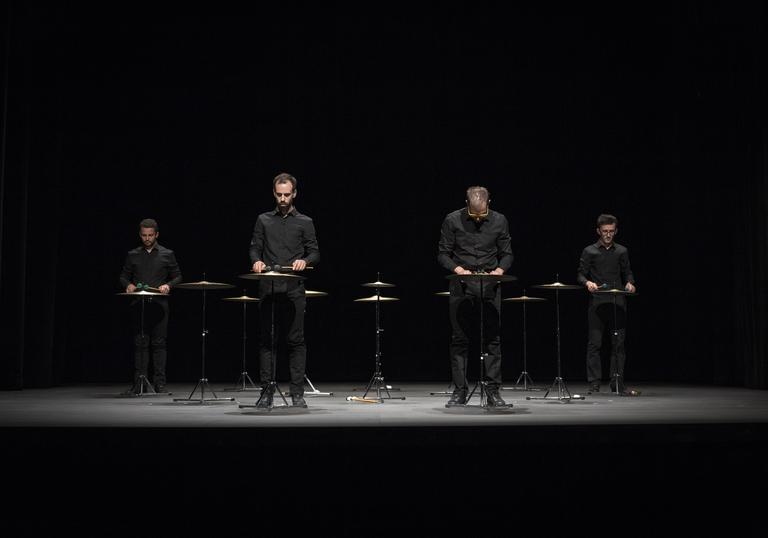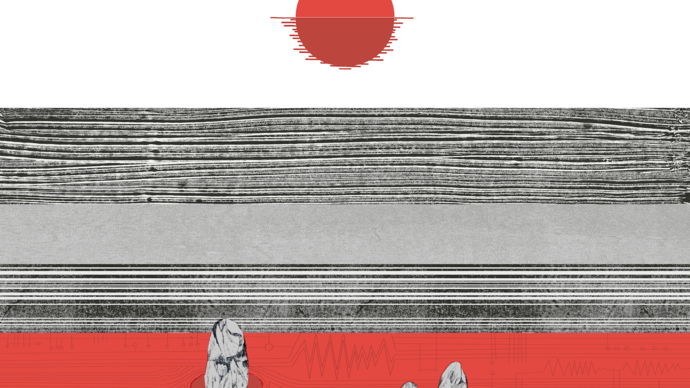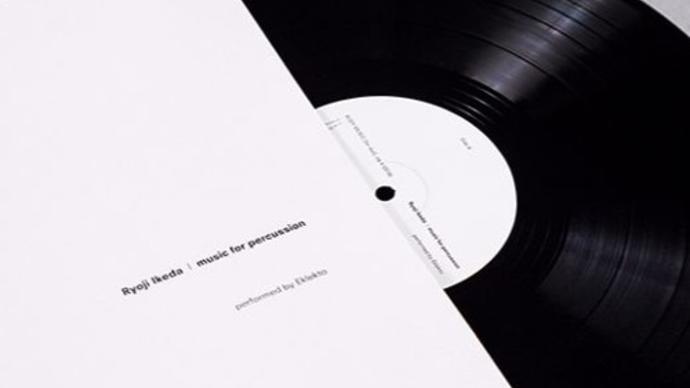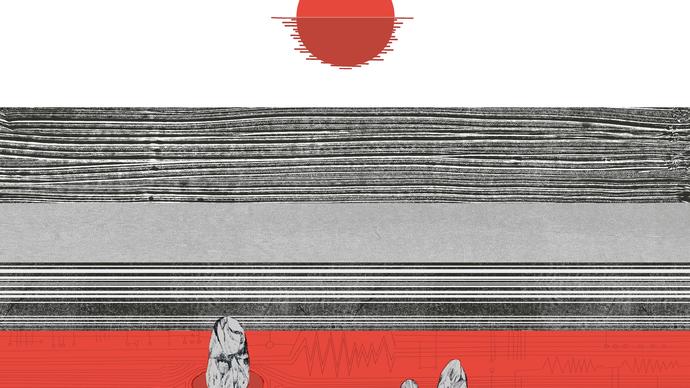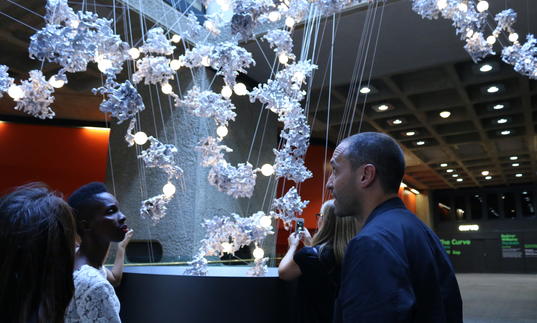Tonight’s programme consists of two contrasting but complementary sides to the work of the groundbreaking Japanese composer and visual artist Ryoji Ikeda. Born in 1966 in the city of Gifu, between Nagoya and Kyoto, Ikeda was originally drawn to hard rock as a teenager, before moving into DJ culture. In the early ‘90s he worked at organising events at Spiral, a performance space, gallery and restaurant in Aoyama, but left that hectic working environment after three years in order to establish his own personal creative space. This began with him contemplating silence. He went on to join the Kyoto based artists collective Dumb Type who specialised in theatre, exhibition, audio-visual work and installation, all of which fed into his own practice and helped him establish his own aesthetic.
Nowadays Ikeda doesn’t give interviews. Much of his work is essentially conceptual, but Ikeda takes the opposite tact to the conceptual artist who is obliged to give lengthy accompanying explanations of their work so that the audience can understand it. Instead he is more concerned that his work should be clear and substantial enough to convey its own meaning.
But in 2006 he gave an exceptionally rare and illuminating interview to David Toop of The Wire, discussing some of the processes that feed into his music and visuals. He said, ‘I’m in the generation after postmodern, after minimalism, after everything. So I just use all kind of techniques as an artist. I’m just me.’
This is born out in the first half of the show, music for percussion. The piece was commisioned by the Swiss percussion ensemble Eklekto and premiered in 2016. It finds Ikeda moving away from the complexities of electronics and multi-media and into an exploration of the properties of single sound sources, all played by Eklekto. In Body Music, two seated players clap their hands, drum on their thighs and use their heels to produce intricate rhythmic patterns.
With Metal Music I two musicians each play the humble triangle but with short and very fast strokes. This is an exercise in precision and intricacy using ostensibly ‘pure’ sound sources. But a triangle produces anything but a pure note and so the clashing harmonic overtones give an effect like electronic feedback, which uncannily echoes the sonic palette of a Japanese Onkyo musician like Toshimaru Nakamura, who manipulates circuit feedback from a no-input mixing board.
A similar effect of drone and overtone is produced by two players in Metal Music II who each play crotales with a violin bow. On Metal Music III, a quartet of players begin by rubbing a single beater across a cymbal using friction to create resonance and as the episodic piece progresses, the musicians explore the different sonic properties of each cymbal’s surface area in a more rhythmic manner.
Ikeda’s fascination with the relationship between mathematics and music, from the compositional methods of J.S. Bach onwards, has fed into the audio-visual piece datamatics [ver. 2.0]. This is an extended version of a composition from 2006, which is based on data from computer hard drive errors and studies of software code.
Essentially, what Ikeda is doing here is related to the notions of ‘glitch’ electronica that were pioneered in the ‘90s and based on the sounds that are produced when technology ceases to work as intended or is deliberately misused – for example, vinyl LP hiss, distortion, hum, skipping CDs, and system crashes. Ikeda established himself in this area along with musicians like Coil and Oval. But datamatics [ver. 2.0] takes these ideas and moves them in into the more rarefied area of complex mathematics.
Data and software are ubiquitous elements in our everyday digital world, but then very few people actually understand how it all works. In datamatics [ver. 2.0], Ikeda uses real–time program computations and data scanning to create an extension of his original work. The technical dynamics of the piece, including its extremely fast frame rates and variable bit depths, challenge and explore the thresholds of our perceptions.
The visuals are computer generated, largely in black and white but with some colour. The elements are essentially minimal but they form complex patterns in 2D and then transform into dramatic rotating views of the universe in 3D. In the final scenes the spectacular imagery is based on four-dimensional mathematical processing. The hypnotic music soundtrack reflects all this through a meticulous layering of sonic components that range across the timbral spectrum from clicks and bleeps to dramatic bass notes.
With datamatics [ver. 2.0], Ikeda ultimately seeks to produce a visceral response. As he said back in 2006, ‘I like the invisible phenomena in sound. Data you can see as a result on the display monitor, but the concept of data is so abstract you can’t touch it. This theme is very exciting to me. You just can’t hear, you just feel. You don’t even feel. It’s like a subconscious thing, from your cells.’
